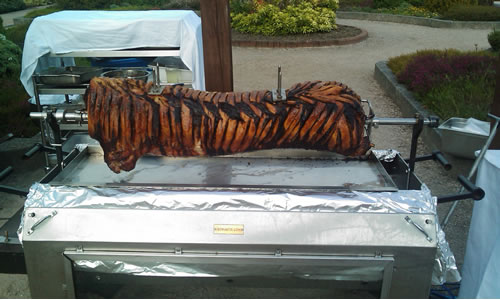The Paleo Diet: Everyone seems to be on it, purchasing Paleo “approved” foods, and cooking up the recipes of our ancestors so you can’t help but wonder if it’s worth your time. Like any diet we’ve ever researched, the answer is a resounding NO!
Losing weight in a healthy way will never be connected to a fad diet (sorry, Hollywood). There are no “magic pills.” A healthy diet is a balanced diet and based on lifestyle changes, not what’s poplar to eat if you’re a celebrity. In this article we’ll review four myths about the Paleo Diet, investigate what meal time was really like for our ancestors, and provide you with some tips that can actually make your next meal healthier.
Paleo Diet Myths and Facts:
Paleo Diet Myth Number 1: Humans evolved to eat meat. Our modern agricultural diets are out of sync with our biology. The Paleo Diet is therefore based on science because it brings us back to our meat-eating roots.
Human Body Fact: Most of our physiological adaptations have allowed us to be better plant consumers! From teeth specialized in grinding plant parts to our larger digestive tracts, most of our adaptations help us digest greenery NOT meat.
Paleo Diet Myth Number 2: Paleolithic humans did not eat whole grains or legumes. We should not eat grains or legumes either because our bodies are not made to digest these foods.
Paleolithic Human Fact: Paleolithic humans actually did eat grains and legumes! This Paleo Diet myth is based on older, outdated research. Current scientific evidence counters earlier studies about our ancestors’ dietary habits and shows that they did eat these plants, which are not Paleo Diet-approved!
Paleo Diet Myth Number 3: Foods featured in “Paleo Diet” meal plans are the foods our ancestors ate during the Paleolithic Period.
Paleolithic Diet Fact: Many of the foods listed on “Paleo Diet” meal plans are actually from the Neolithic Period. Food lists for the Paleolithic diet include vegetables and fruits that weren’t possible for our ancestors to consume until the Neolithic Period and the introduction of farming. Additionally, the actual Paleolithic Diet included grains and legumes (see myth 2). However, food lists for the fad Paleo Diet include mostly meat. Even though our Paleolithic ancestors ate meat, the meat found in Paleolithic times would have been much leaner than what we eat today. Additionally, as a Paleolithic man or woman you would have eaten the bone marrow and organs from your hunt (neither of which are included in the Paleo Diet).
Paleo Diet Myth Number 4: If we adopt this ancient diet we will improve our health and live longer.
Paleolithic Diet Fact: The fad diet is nowhere close to the ancient one and even if it was there is no proof that we would live longer if we ate as our ancestors did
How should we eat?
Given the fact that most of the cornerstones of the fad Paleolithic Diet are actually myths, you may be wondering what you should eat if you want to become more healthy. Below, we’ll uncover three healthy eating tips inspired by the debate about the Paleolithic Diet.
Healthy Eating Tip #1: DIVERSITY is the key to healthy eating. There is no one main “diet” that we should eat. Rather, eating a variety of foods is best. This way you ensure that your body is getting all of its nutrients. The Paleo Diet gets this part right because it notes that processed foods are not healthy. This is true and limiting processed foods will help you diversify your diet. Processed foods include just three main ingredients: corn, soy, and wheat. We should eat more than these three!
Health Eating Tip #2: Eat foods IN SEASON when they are the freshest. Our Paleolithic ancestors had to abide by this healthy eating tip! Eating foods when they are in season ensures that you are getting the most nutrients from your foods and allows you to work diversity (healthy eating tip #1) into your meal choices. Additionally, fresh foods don’t need preservatives. The function of preservatives is to prevent the growth of bad bacteria on our food. Since we’re not sure what eating some of these preservatives may do to the “good” bacteria that help our bodies digest food, it is best not to include them in our diets if we don’t need to do so.

Healthy Eating Tip #3: Eating whole foods is important. Processed foods are easier for us to overeat. The body has adapted ways to signal us to stop eating when we are full. However, when we eat processed foods, we can consume a larger amount of food without getting this feedback. For example, the sugar in one of today’s large sodas can be consumed in less than 20 minutes. Eating and digesting an equivalent amount of the whole food, eight feet of sugar cane, would take a lot longer. Our bodies are built to consume whole foods in order to send signals that will keep us from overeating. The Paleo Diet includes whole foods unlike the diet of many modern cultures.
There will always be some new fad diet that everyone seems to be trying. Remember, that these diets are usually not healthy and seldom based on scientific fact. Have you heard about the Paleo Diet? Which myth or fact is most surprising to you? Share your ideas with us by commenting below. Have a friend dead set on eating like his or her Paleolithic ancestors? Be sure to clue him or her in on the actual facts by sharing this post!
